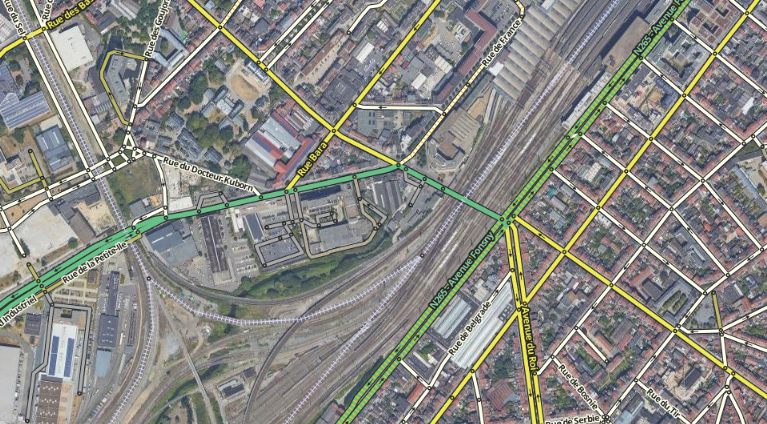Railroad/fr

Voie ferrée
Dans le BeLux, les voies de chemin de fer, de métro et de tram sont cartographiées à l'aide du type de route Voie ferrée afin que les conducteurs puissent s'orienter visuellement. Les voies intégrées à la voirie ou sur site propre ne doivent pas être cartographiées.
Attributs:
| Rue | Ville | Niveau |
|---|---|---|
- Les voies ferrées doivent être cartographiées comme des lignes continues. Pas de nœuds de jonction aux limites de la ville ;
- Pas de nom de ville et un nom de rue fixe ;
- Une élévation correspondant à la situation réelle.
En ce qui concerne les autres transports en commun, d'autres directives existent ; par exemple, on utilise les chemins piétons non routables pour les transports en commun.

- Railroads should be mapped uninterrupted. No junction nodes at city borders.
- No City name. A Street name can be added if it helps drivers to orient themselves. Better avoid general names like "Railroad" to prevent cluttering the screen.
- Set elevation according to the real situation.
- At crossings with drivable roads on the same elevation level, the railroad may be connected to the road with a junction node. Leave the turns disabled.
- Add a Railroad Crossing at junctions with drivable segments
For other means of public transport there are other guidelines, for instance pedestrian boardwalks are used for public transport by bus.
